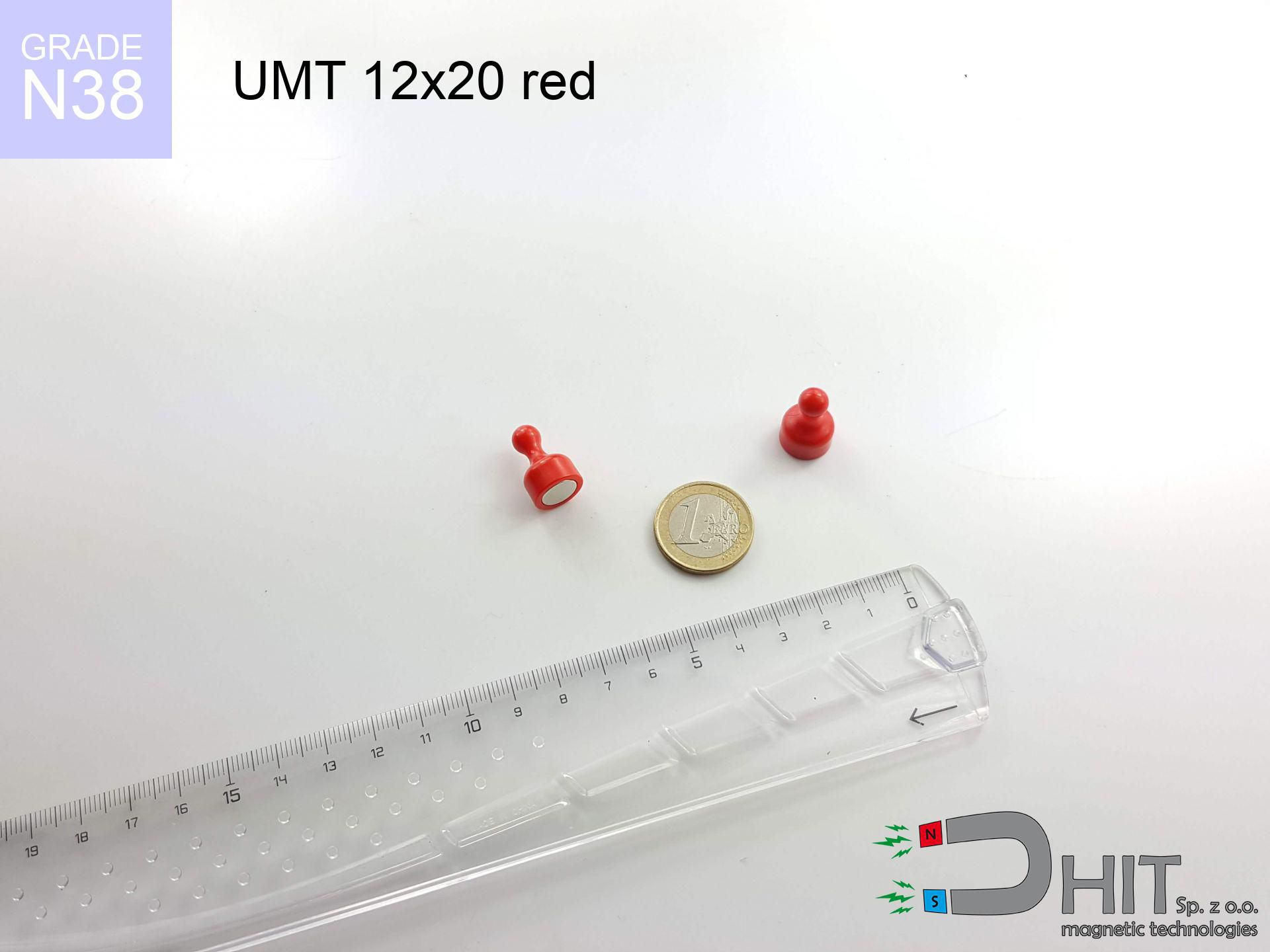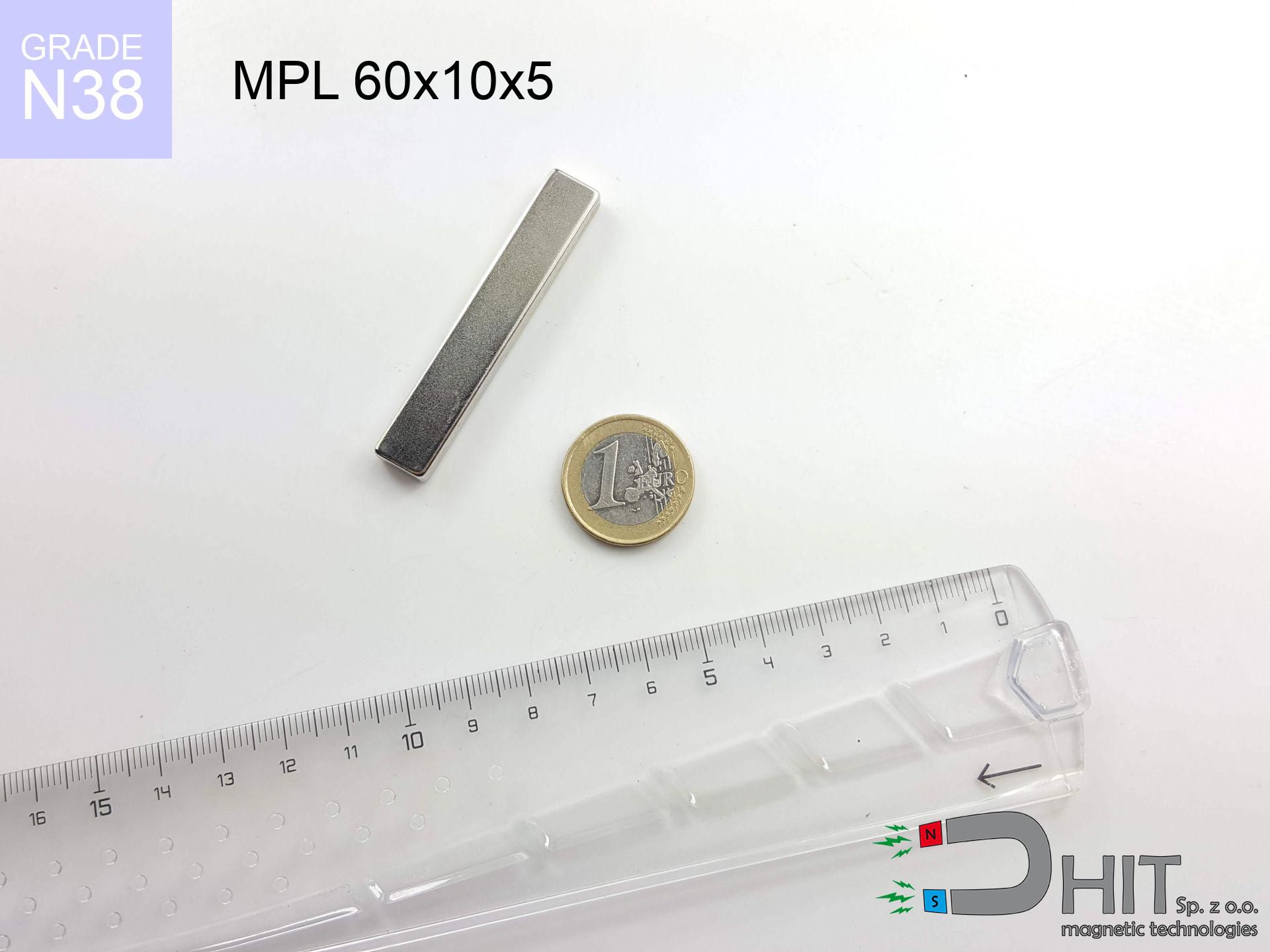UMT 29x38 white / N38 - board holder
board holder
Catalog no 230283
GTIN/EAN: 5906301814351
Diameter Ø
29 mm [±1 mm]
Height
38 mm [±1 mm]
Weight
6 g
Coating
[NiCuNi] Nickel
6.81 ZŁ with VAT / pcs + price for transport
5.54 ZŁ net + 23% VAT / pcs
bulk discounts:
Need more?Do you have trouble choosing?
Call us
+48 22 499 98 98
alternatively let us know via
request form
the contact page.
Lifting power along with structure of a magnet can be checked using our
magnetic mass calculator.
Same-day shipping for orders placed before 14:00.
UMT 29x38 white / N38 - board holder
Specification / characteristics UMT 29x38 white / N38 - board holder
| properties | values |
|---|---|
| Cat. no. | 230283 |
| GTIN/EAN | 5906301814351 |
| Production/Distribution | Dhit sp. z o.o. |
| Country of origin | Poland / China / Germany |
| Customs code | 85059029 |
| Diameter Ø | 29 mm [±1 mm] |
| Height | 38 mm [±1 mm] |
| Weight | 6 g |
| Coating | [NiCuNi] Nickel |
| Manufacturing Tolerance | ±1 mm |
Magnetic properties of material N38
| properties | values | units |
|---|---|---|
| remenance Br [min. - max.] ? | 12.2-12.6 | kGs |
| remenance Br [min. - max.] ? | 1220-1260 | mT |
| coercivity bHc ? | 10.8-11.5 | kOe |
| coercivity bHc ? | 860-915 | kA/m |
| actual internal force iHc | ≥ 12 | kOe |
| actual internal force iHc | ≥ 955 | kA/m |
| energy density [min. - max.] ? | 36-38 | BH max MGOe |
| energy density [min. - max.] ? | 287-303 | BH max KJ/m |
| max. temperature ? | ≤ 80 | °C |
Physical properties of sintered neodymium magnets Nd2Fe14B at 20°C
| properties | values | units |
|---|---|---|
| Vickers hardness | ≥550 | Hv |
| Density | ≥7.4 | g/cm3 |
| Curie Temperature TC | 312 - 380 | °C |
| Curie Temperature TF | 593 - 716 | °F |
| Specific resistance | 150 | μΩ⋅cm |
| Bending strength | 250 | MPa |
| Compressive strength | 1000~1100 | MPa |
| Thermal expansion parallel (∥) to orientation (M) | (3-4) x 10-6 | °C-1 |
| Thermal expansion perpendicular (⊥) to orientation (M) | -(1-3) x 10-6 | °C-1 |
| Young's modulus | 1.7 x 104 | kg/mm² |
Chemical composition
| iron (Fe) | 64% – 68% |
| neodymium (Nd) | 29% – 32% |
| boron (B) | 1.1% – 1.2% |
| dysprosium (Dy) | 0.5% – 2.0% |
| coating (Ni-Cu-Ni) | < 0.05% |
Ecology and recycling (GPSR)
| recyclability (EoL) | 100% |
| recycled raw materials | ~10% (pre-cons) |
| carbon footprint | low / zredukowany |
| waste code (EWC) | 16 02 16 |
Other offers
Advantages and disadvantages of rare earth magnets.
Advantages
- Their strength remains stable, and after approximately ten years it drops only by ~1% (according to research),
- Magnets very well resist against demagnetization caused by external fields,
- The use of an aesthetic layer of noble metals (nickel, gold, silver) causes the element to present itself better,
- Magnetic induction on the surface of the magnet remains maximum,
- Through (adequate) combination of ingredients, they can achieve high thermal resistance, enabling operation at temperatures reaching 230°C and above...
- Possibility of detailed modeling and optimizing to individual needs,
- Significant place in modern industrial fields – they are utilized in magnetic memories, electromotive mechanisms, medical equipment, also complex engineering applications.
- Relatively small size with high pulling force – neodymium magnets offer strong magnetic field in tiny dimensions, which allows their use in compact constructions
Disadvantages
- To avoid cracks under impact, we recommend using special steel housings. Such a solution protects the magnet and simultaneously increases its durability.
- Neodymium magnets decrease their power under the influence of heating. As soon as 80°C is exceeded, many of them start losing their force. Therefore, we recommend our special magnets marked [AH], which maintain stability even at temperatures up to 230°C
- They rust in a humid environment - during use outdoors we suggest using waterproof magnets e.g. in rubber, plastic
- Limited ability of making threads in the magnet and complex forms - preferred is cover - mounting mechanism.
- Possible danger resulting from small fragments of magnets pose a threat, if swallowed, which is particularly important in the context of child safety. Furthermore, small components of these magnets can be problematic in diagnostics medical in case of swallowing.
- With large orders the cost of neodymium magnets is economically unviable,
Holding force characteristics
Maximum magnetic pulling force – what contributes to it?
- on a plate made of structural steel, perfectly concentrating the magnetic flux
- possessing a massiveness of min. 10 mm to avoid saturation
- with an ground touching surface
- with direct contact (no coatings)
- during pulling in a direction perpendicular to the plane
- at conditions approx. 20°C
Determinants of lifting force in real conditions
- Gap (betwixt the magnet and the metal), since even a tiny clearance (e.g. 0.5 mm) leads to a decrease in lifting capacity by up to 50% (this also applies to paint, corrosion or dirt).
- Angle of force application – highest force is obtained only during pulling at a 90° angle. The shear force of the magnet along the plate is standardly many times smaller (approx. 1/5 of the lifting capacity).
- Substrate thickness – for full efficiency, the steel must be adequately massive. Paper-thin metal limits the lifting capacity (the magnet "punches through" it).
- Plate material – low-carbon steel gives the best results. Higher carbon content decrease magnetic properties and lifting capacity.
- Base smoothness – the smoother and more polished the plate, the larger the contact zone and stronger the hold. Roughness creates an air distance.
- Thermal environment – heating the magnet causes a temporary drop of induction. It is worth remembering the maximum operating temperature for a given model.
Holding force was checked on the plate surface of 20 mm thickness, when a perpendicular force was applied, in contrast under attempts to slide the magnet the lifting capacity is smaller. Additionally, even a small distance between the magnet’s surface and the plate reduces the lifting capacity.
Electronic hazard
Do not bring magnets near a wallet, laptop, or screen. The magnetism can irreversibly ruin these devices and erase data from cards.
Sensitization to coating
Medical facts indicate that nickel (the usual finish) is a potent allergen. If you have an allergy, refrain from direct skin contact and choose coated magnets.
Medical interference
Medical warning: Strong magnets can turn off pacemakers and defibrillators. Do not approach if you have medical devices.
Power loss in heat
Keep cool. Neodymium magnets are susceptible to temperature. If you require resistance above 80°C, look for HT versions (H, SH, UH).
Do not drill into magnets
Fire hazard: Rare earth powder is explosive. Do not process magnets in home conditions as this may cause fire.
Caution required
Handle magnets consciously. Their powerful strength can shock even professionals. Stay alert and respect their force.
Risk of cracking
Despite the nickel coating, neodymium is delicate and not impact-resistant. Do not hit, as the magnet may crumble into hazardous fragments.
Choking Hazard
Neodymium magnets are not suitable for play. Swallowing a few magnets may result in them pinching intestinal walls, which constitutes a direct threat to life and requires urgent medical intervention.
Threat to navigation
GPS units and mobile phones are highly sensitive to magnetic fields. Close proximity with a strong magnet can ruin the sensors in your phone.
Bone fractures
Pinching hazard: The pulling power is so great that it can result in blood blisters, pinching, and even bone fractures. Protective gloves are recommended.



![UMP 135x40 [M10+M12] GW F600 Lina / N38 - search holder UMP 135x40 [M10+M12] GW F600 Lina / N38 - search holder](https://cdn3.dhit.pl/graphics/products/ump-135x40-m10+m12-gw-f600-+lina-sej.jpg)




